written and photographed by Mary L. Peachin
Oct 2002, Vol. 7 No. 1
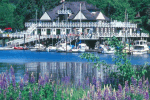 Like many love affairs, this one was totally spontaneous. Escaping the summer heat of hometown Tucson, my husband and I thought of Vancouver as a gateway to remote fly fishing adventures. For three years we spent a few days in the city passing through before heading to the wilderness. And in the process, we became “hooked”—not on the fishing, but smitten with Vancouver.
Like many love affairs, this one was totally spontaneous. Escaping the summer heat of hometown Tucson, my husband and I thought of Vancouver as a gateway to remote fly fishing adventures. For three years we spent a few days in the city passing through before heading to the wilderness. And in the process, we became “hooked”—not on the fishing, but smitten with Vancouver.
Bustling Robson Street is the city’s shopping mecca, with many of the same stores you might find on New York’s Fifth Avenue. During evening hours, young adults mingle outside the street’s restaurants and bars. There’s body-to-body checking, street artists performing mime or drawing illustrations of posed tourists; everyone is taking in the scene. Elegant hotels like the historic Fairmont Hotel Vancouver and Wedgewood are located nearby. Fine restaurants like CinCin, Cru, Tojos, the list is endless, makes Vancouver a foodie destination.
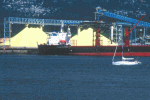 We enjoyed the Robson scene, but opted to stay somewhere less bustling. On a previous visit to the city, I’d fallen in love with the Vancouver Marriott Pinnacle Downtown Hotel on West Hastings. The room had a glorious view of Coal Harbour and the Burrard Inlet. I could sit at the desk, or lie on the bed, spellbound by the view of North America’s largest west coast port. Thirty ships a day, both cargo and cruise, passed my window. Occasionally, there was the rumble of a floatplane churning the watery runway on its way to Victoria or the Gulf Islands.
We enjoyed the Robson scene, but opted to stay somewhere less bustling. On a previous visit to the city, I’d fallen in love with the Vancouver Marriott Pinnacle Downtown Hotel on West Hastings. The room had a glorious view of Coal Harbour and the Burrard Inlet. I could sit at the desk, or lie on the bed, spellbound by the view of North America’s largest west coast port. Thirty ships a day, both cargo and cruise, passed my window. Occasionally, there was the rumble of a floatplane churning the watery runway on its way to Victoria or the Gulf Islands.
The 180-degree view included the craggy snow-capped peaks of the North Shore Mountains, the greenery of Stanley Park, and the gateway to the city from the west and north, Lions Gate Bridge. Locals, who refer to the bridge as “Lions Wait” (because of its traffic congestion), might be inured to sculptor Charles Marega’s stately concrete lions guarding the bridge’s south approach, but I was a fan.
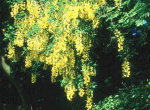 The three-lane bridge was named for the two 5,800-foot granite peaks that dominate the range beyond it. In native lore, the peaks are known as “The Two Sisters”; when the Capilano Nation made peace with its Upper Coast enemy, the story goes, the twin daughters of the chief were transformed into the peaks, said to symbolize peace and brotherhood.
The three-lane bridge was named for the two 5,800-foot granite peaks that dominate the range beyond it. In native lore, the peaks are known as “The Two Sisters”; when the Capilano Nation made peace with its Upper Coast enemy, the story goes, the twin daughters of the chief were transformed into the peaks, said to symbolize peace and brotherhood.
After settling in, I walked the mile to Stanley Park, one of North America’s great city parks and the pride of Vancouver. I diverted by a bike store, one of many along Denman Street that rents bikes, scooters, and roller blades to visitors, many of whom traverse the six-mile seawall promenade circling the park from Burrard Inlet to English Bay Beach.
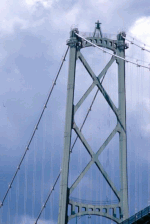 One six-mile loop around the Park, and I quickly gave up the thought of finding a fitness center; this route was going to be my summer workout. (Options for less-energetic park visitors include horse-drawn carriages, the Vancouver Trolley Company, and a miniature replica of the Canadian Pacific Railway.) I caught brief glimpses of the Great Gray squirrel (which is unaccountably black), Canada geese, ducks (whose population increased as the weeks passed), and elegant swans. Bicycle riders share one path with skaters; a parallel path is for walkers and joggers.
One six-mile loop around the Park, and I quickly gave up the thought of finding a fitness center; this route was going to be my summer workout. (Options for less-energetic park visitors include horse-drawn carriages, the Vancouver Trolley Company, and a miniature replica of the Canadian Pacific Railway.) I caught brief glimpses of the Great Gray squirrel (which is unaccountably black), Canada geese, ducks (whose population increased as the weeks passed), and elegant swans. Bicycle riders share one path with skaters; a parallel path is for walkers and joggers.
I opted to spend the next day on foot, checking out the downtown area. A spate of rain threatened to alter my plans, but I soon found that the city’s street-level tourist amenities were replicated in extensive underground malls; some connected with others continuing for blocks. Restaurants vying for local lunch business offered all-you-can-eat” menus for $8-10 CD. I’d soon grow used to biking in the rain, however: Vancouver’s clean air, spectacular greenery, and sparkling views are due, in part, to its voluminous rainfall. Like the locals, I ignored the wet weather and headed out on two wheels.
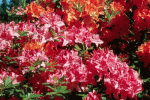 One day’s exploration took me around the park to the east side of English Bay. I loaded my bicycle onto the water taxi for a ride to Granville Island, known for its enormous farmers’ market. The market, open everyday, offers the finest in produce, seafood, meat, and other delicacies. A food court features international cuisine. Down an alley, The Lobster Man sells all kind of live seafood, including fresh Dungeness crabs, oysters, and clams. I discovered Yogen Fruz (yogurt crushed with fresh fruit) and flat bagels covered with poppy and sesame seeds. Tucked along the seawall just outside the market is the Granville Island Sport Fishing, Model Ships, and Model Trains Museums and, beyond this, a wealth of boutiques and art galleries. Those looking for more active entertainment can rent kayaks or charter sailboats from the island’s piers.
One day’s exploration took me around the park to the east side of English Bay. I loaded my bicycle onto the water taxi for a ride to Granville Island, known for its enormous farmers’ market. The market, open everyday, offers the finest in produce, seafood, meat, and other delicacies. A food court features international cuisine. Down an alley, The Lobster Man sells all kind of live seafood, including fresh Dungeness crabs, oysters, and clams. I discovered Yogen Fruz (yogurt crushed with fresh fruit) and flat bagels covered with poppy and sesame seeds. Tucked along the seawall just outside the market is the Granville Island Sport Fishing, Model Ships, and Model Trains Museums and, beyond this, a wealth of boutiques and art galleries. Those looking for more active entertainment can rent kayaks or charter sailboats from the island’s piers.
Another day, I bicycled eastward along the seawall to False Creek, where the annual Dragon Boat Festival was in full swing. Teams of 25 rowers raced oversized, dragon-prowed canoes up the creek (which is more like a bay), recreating an ancient Chinese festival. A total of 180 teams—4,500 paddlers—crossed the finish line, splashing opponents with their oars after each race.
 That afternoon featured a change of pace, a Japanese tea ceremony. The Sutton Place’s Fleuri Restaurant offers afternoon tea served in the Japanese tradition. In this slow, beautiful ritual, the server ladles powdered green tea (loaded with caffeine) into a matcha bowl, then whisks it with a bamboo brush until blended. The tea is served with sweet, chewy red-bean and strawberry manju, a dim sum-like dumpling.
That afternoon featured a change of pace, a Japanese tea ceremony. The Sutton Place’s Fleuri Restaurant offers afternoon tea served in the Japanese tradition. In this slow, beautiful ritual, the server ladles powdered green tea (loaded with caffeine) into a matcha bowl, then whisks it with a bamboo brush until blended. The tea is served with sweet, chewy red-bean and strawberry manju, a dim sum-like dumpling.
Another tasting event was selecting the hidden delicacies inside authentic dim sum dumplings at the Victoria and Imperial Chinese Seafood Restaurants. At the latter, servers walked from one table to another carrying a variety of menu items all covered in bamboo boxes. You could pick and choose and then would mark the item on a running tab.
The weeks passed, and I began to feel more and more like a Vancouverite. I watched the rhododendrons in Stanley Park fade and morning glories, sweet peas, hydrangeas, and roses blossom. I began to recognize park regulars on their morning runs, and daily I checked the catch of some elderly Asians fishing for ling cod along the northernmost seawall. An anonymous artist stacked boulders into rock sculptures near Ferguson Point; they would be knocked down by storms or vandals, and then be replaced by the diligent artist.
 A pregnant beluga, Aurora, at the Vancouver Aquarium Marine Science Centre, located in the center of the park, gave birth to her second calf in seven years. The city cheered the birth of her son. Just weeks before I had scuba dived in her tank as well as one filled with black tip sharks.
A pregnant beluga, Aurora, at the Vancouver Aquarium Marine Science Centre, located in the center of the park, gave birth to her second calf in seven years. The city cheered the birth of her son. Just weeks before I had scuba dived in her tank as well as one filled with black tip sharks.
The summer tourist season began, and city streets and park paths grew crowded, echoing with snatches of conversation in so many languages. How wonderful to explore such a multicultural city. Thousands of people wearing cruise-line name tags stopped in Vancouver before boarding ships to Alaska; many frequented the cobblestone streets of historical Gastown, waiting for the quarter-hour soundings of the picture-perfect steam clock’s Westminster chimes.
I wandered further afield, hitching a ride with a visiting friend who took me to Steveston, a quaint fishing town south of downtown, dominated by a wharf loaded with restaurants and shops. When the fleet of salmon boats dock each morning, shoppers can buy fish right off the boat. A sign on one shop door read, “No bags of fish inside—they leak.”
 Last summer, getting to North Vancouver’s Londale Quay market required some ingenuity. At the empty Seabus station, we discovered the ferry across Burrard Inlet had joined the summer long transit strike. We rented a boat and toured the Quay and Coal Harbour. Unfortunately, without a car, we missed visiting the Capilano Suspension Bridge (strung 450 feet across the canyon at a height of 230 feet) and the Grouse Mountain Skyway tram.
Last summer, getting to North Vancouver’s Londale Quay market required some ingenuity. At the empty Seabus station, we discovered the ferry across Burrard Inlet had joined the summer long transit strike. We rented a boat and toured the Quay and Coal Harbour. Unfortunately, without a car, we missed visiting the Capilano Suspension Bridge (strung 450 feet across the canyon at a height of 230 feet) and the Grouse Mountain Skyway tram.
In the following weeks, I passed through the city several times, on the way to and from adventures in more remote parts of British Columbia and the Yukon Territory. Each time I returned I had a warmer feeling about Vancouver. I perched at my desk in my hotel room, distracted by the harbor view, writing stories, editing photos, and catching up with e-mail. I felt like a real Vancouverite; every now and then I even made a run to the Laundromat.
But all too soon it was time for me to return to Tucson. The Celebration of Light (formerly the Symphony of Fire, a musically choreographed fireworks competition between China, Spain, and South Africa) would be the grand finale of my Vancouver experience. This annual Olympian event attracts hundreds of thousands as it dominates the skyline over English Bay. This spectacular 25-minute display combined with music was an event I had never witnessed except on television the night of the millennium.
 And the transit strike? It continued for 120 days before the provisional government took charge and ended it. Service, it turned out, was scheduled to resume the day of my departure. To woo back riders, Translink offered free rides for three days. The strike had disrupted the daily life of the city, affecting most severely the young, the elderly, and the city’s small businesses. But for one visitor, the strike inspired a variety of exploration—street-level and intimate—that made Vancouver come alive as it could only by foot and by bike.
And the transit strike? It continued for 120 days before the provisional government took charge and ended it. Service, it turned out, was scheduled to resume the day of my departure. To woo back riders, Translink offered free rides for three days. The strike had disrupted the daily life of the city, affecting most severely the young, the elderly, and the city’s small businesses. But for one visitor, the strike inspired a variety of exploration—street-level and intimate—that made Vancouver come alive as it could only by foot and by bike.
A year past, and it became apparent that my husband of 37 years felt the same yearning to return to Vancouver. He suggested that this time we rent an apartment, go earlier and stay longer.
Arriving in late May, we caught the height of the rhododendron season. The city was in bloom. Our first stop was the bike shop: this time we purchased bikes, ones we could sell back at the end of the summer.
Without the transit strike, we were not limited to distances or steep grades. We drove to Queen Elizabeth Park, Vancouver’s second most popular park is home to the Bloedel Observatory.
Each day as we did our 8-mile (counting the distance to Stanley Park) ride around the seawall, the people, flowers, and wildlife changed. When the Rhodendrons withered, the roses bloomed. A young woman picked fresh raspberries for her breakfast. The crows cocked their beaks preening for a mate as stately blue herons fished along the shore. The Canada geese swam in a line against the current as if they were “drafting” to protect one another from the wind.
Having a vehicle opened even more doors. We spent an evening under the tent at Bard on the Beach watching Shakespeare as yachts passed beneath the skyline of the backdrop of the stage. Men and women shared the same line for a tent of Porta potties, an “Allie McBeal” co-ed bathroom.
One night we rode the Pacific Starlight Dinner catching it in North Vancouver. Dining in vintage cars between North Vancouver and Porteau Cove, we danced under a band shell to nostalgic music. Unfortunately, both trains have stopped operation.
The Celebration of Light came all too fast. Once again it marked the end of a wonderful summer. But the romance was in full swing, we couldn’t live Vancouver for long, the bond was too strong. Next year, our small condo overlooking Coal Harbour will be completed.
If you go:
Vancouver International Airport is served by many airlines including America West, Alaska, United, Delta, British Airways, and Air Canada.
BC Ferries operates from Seattle. (1-888-BCFERRY)
For a complete city guide, go to www.tourismvancouver.com —one of the best city sites on the Web.
Hotels
Vancouver Marriott Pinnacle Downtown
1-800-207-4150
www.vancouvermarriott.com
Fairmont Hotel Vancouver
hvcreservations@fairmont.com
www.hotelvancouver.com
Wedgewood Hotel
1-800-663-0666
info@wedgewoodhotel.com
www.wedgewoodhotel.com
Restaurants
CinCin Restaurant & Bar
www.cin-cin.com
www.cru.com
Imperial Chinese Seafood Restaurant. (dim sum)
www.imperialrestaurant.com
Sights
Stanley Park
www.StanleyParkTours.com
Harbour Cruises
Vancouver Aquarium Marine Science Centre (in Stanley Park)
www.vanaqua.org
Grouse Mountain Skyride & Ski Resort
www.grousemtn.com
Granville Island Museums
info@SportFishingMuseum.BC.Ca
Capilano Suspension Bridge, North Vancouver
604-985-7474
www.capbridge.com
Bard on the Beach
604-739-0559
www.bardonthebeach.org
